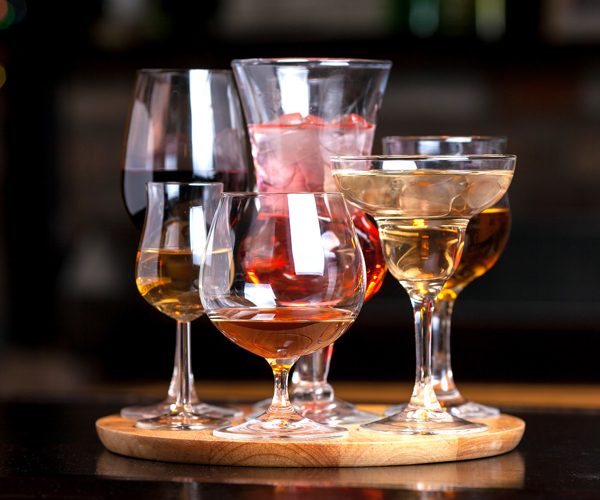Alcohol-linked deaths soaring
From Newsmax

Americans are drinking themselves to death at ever-increasing rates, with women in particular hitting the bottle hard, a new study shows.
The rate of alcohol-induced deaths among women increased between 3.1% and 3.6% a year from 2000 to 2016, while deaths among men increased 1.4% to 1.8% each year, according to the findings.
What’s worse, the rates have accelerated in recent years — the average annual increase for women was 7.1% between 2013 and 2016, and for men it was 4.2% between 2012 and 2016.
“The opioid crisis has generated the most attention in the media, and certainly in Washington as well, but this study demonstrates that America has had a serious alcohol problem for decades,” said Dr. Timothy Brennan, director of the Addiction Institute of Mount Sinai West and Mount Sinai St. Luke’s in New York City.
“This study really underlines the ongoing public health menace of alcohol use disorder and risky and dangerous drinking,” added Brennan, who was not involved with the study.
This is just the tip of the iceberg when it comes to drink-related fatalities. The deaths documented here were solely due to illness caused by drinking, mainly alcoholic liver disease, said lead researcher Susan Spillane, a former fellow with the U.S. National Cancer Institute’s Division of Cancer Epidemiology and Genetics.
“We excluded causes known to be alcohol-related but not 100% alcohol-attributable, such as road traffic accidents, alcohol-associated cancers, and infections and organ system diseases known to be associated with alcohol use,” Spillane explained.
“Rates of alcohol-induced deaths, as documented in our study, are bellwethers of a far larger public health problem, as these rates capture only a portion of all alcohol-related deaths and say nothing of alcohol-related morbidities,” she added.
For the study, Spillane and her colleagues examined death certificate data maintained by the U.S. Centers for Disease Control and Prevention, as well as population statistics from the U.S. Census Bureau.
Breaking it down into subgroups, the largest average increases in alcohol-induced deaths were observed among American Indian and Alaska Native men (3.3%) and women (4.2%), as well as white women (4.2%).
In 2016, alcoholic liver disease accounted for 60% of alcohol-induced deaths in males and 69% in females. Deaths due to alcohol poisoning or alcohol-related mental and behavioral disorders accounted for 36% of deaths in males and 28% in females.
“Notably, these increased rates occurred throughout the U.S., including among urban, rural, wealthier and poorer counties,” Spillane said. “Our findings document an urgent public health crisis calling for concerted public health action.”
The findings were published Feb. 21 in the journal JAMA Network Open.
No one can say for sure why more Americans are dying from drink, but experts have a few theories.
“We know that stress, anxiety and wealth inequality are correlated with higher drinking levels, especially among women as the gender gap closes,” said Pat Aussem, director of clinical content and development for the Center on Addiction.
Women are also at higher risk for alcohol poisoning due to their physiology, according to the U.S. National Institute on Alcohol Abuse and Alcoholism.
On average, women weigh less than men. In addition, alcohol tends to reside in the body’s water, and women pound for pound carry less water in their bodies than men. That means women will reach higher blood alcohol levels than men of comparable weight, even though they’ve drunk the same amount of alcohol.
“Women and older adults are also more likely to be prescribed medications that are known to be contraindicated with the consumption of alcohol, such as benzodiazepines like Xanax and painkillers like Vicodin and Percocet,” Aussem added.
Larger societal shifts also have taken place that makes alcohol more available to people, Brennan said.
“Where one can purchase alcohol has really dramatically increased in the last few decades,” Brennan said. “Many of us grew up in towns where there might be a liquor store, but you didn’t have alcohol for sale in the grocery store. Now we see a ubiquity of alcohol-purchasing opportunities.
“We’ve also seen a whole ton of innovations in the alcohol industry,” Brennan continued. “You’re now able to purchase things far beyond beer, liquor and wine. There are all sorts of alcohol-based teas and lemonades and seltzers. As consumers, we’re more and more inundated with different types of alcohol and different opportunities to purchase alcohol.”
Aussem said there are a number of actions that could be taken to stem this trend:
- Doctors can regularly screen patients for alcohol use, addiction, mental health disorders or family violence.
- The public should be educated on CDC guidelines that limit daily alcohol consumption to one drink for women and two drinks for men.
- The availability of affordable treatment for alcoholism should be supported.
- State and local laws can tax alcohol, limit the number of liquor stores in a community, or hold businesses more accountable for selling booze to minors or people who are already intoxicated.
- The stigma related to alcoholism should be addressed, so people can seek care without being labeled or shamed.
© HealthDay
For more on this story go to; https://www.newsmax.com/health/health-news/alcoholism-substance-abuse/2020/02/24/id/955416/?ns_mail_uid=6952f1f9-507d-4a20-8cc0-0a1db158d76e&ns_mail_job=DM93491_02252020&s=acs&dkt_nbr=010124u4qa9u





